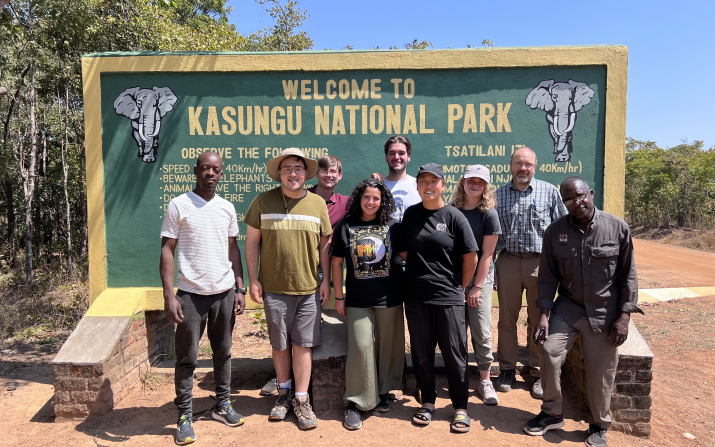Engineering students provide power for people of Malawi

A group of Case School of Engineering students are bringing power to isolated parts of Malawi in Africa.
In Kasakula, a village just outside of the Kasungu National Park where Case Western Reserve University students brought power to park ranger living quarters in 2021, a Humanitarian Design Corps (HDC) team is putting the finishing touches on a solar powered community charging station.
“Right now, community members are walking several miles to a charging station,” Grace Shin, a third-year chemical engineering student and the team lead, shared. “This project will allow them to have better access to electricity right in their village.”
Providing power
What are the key items villagers are charging? Their cellphones, for one, but also their household batteries, which Shin describes as batteries the size of a car battery used to power the lights and appliances in their homes.
At existing charging stations, villagers are paying 100 kwacha, about 10 cents in U.S. dollars, which is a considerable portion of their income. While the newly constructed station will incur a fee, CWRU students developed a plan in partnership with the village’s National Resources Committee to ensure that the money spent to charge would stay in the community and be used for maintenance.
During their week in Malawi, the team of six worked on training the Natural Resources Committee on using the stations—charging and removing devices, determining when batteries would run out of power and how to maintain the solar panels. Just over a month after the team returned to Cleveland, the electrical installation was completed, opening the system for business.
Leading the charge
Having joined the Humanitarian Design Corps in fall of 2021, Shin had worked on other projects as a member of the Congo Team, designing rainwater collection and solar power supply for a university in the Republic of Congo, and the motorized arm team, creating a motorized camera arm for a Cleveland photographer with limited mobility. But this time, she was doing something new—taking on the role of team leader.
“It was challenging and unlike anything else I’d ever done before,” she shared. “But it was very rewarding and I think I gained a lot of skills from it. Leading a project of this size was more responsibility than I’ve ever had before.”
A project of this size, happening in another part of the world, requires a lot of coordination. Shin knew this and realized that a key to success was good communication with all of the stakeholders involved in the process, from the international teams and government officials to contractors and technical advisors.
Another big lesson? The importance of getting to know the people on the team and understanding their skills, their strengths, their preferences before delegating tasks.
The Malawi team currently has 14 members, six of them, including Shin, went on the August implementation trip:
-
Sydney Mountcastle, fourth-year, biomedical engineering
-
Ian Dyke, fourth-year, mechanical engineering
-
Thomas Gaither, third-year, biomedical engineering
-
Melis Sahin, second-year, biomedical engineering
-
Graham Bierhanzl, second-year, mechanical engineering
“I think on the trip I even learned more about the kind of work that each member was suited for, even though I had been working with them for the past two years,” she said. “Just spending that much time with them you learn a lot more, and get a better understanding of what each person can bring to the team.”
Building relationships
In December of 2021 the team of Humanitarian Design Corp students worked via Zoom with the Department of Parks and Wildlife in Malawi to set up a solar installation, bringing power to the living quarters of the park’s rangers. Because of their remote location, these living quarters were not connected to the country’s main power grid, meaning rangers and their families lived a very disconnected life.
Thanks to CWRU students, the rangers have been able to more effectively do their jobs—protecting the park from poachers—because electronic tracking equipment allows them to go on longer patrols while staying in contact with park headquarters. It also provides a better quality of life, giving park rangers and their families the ability to power their devices—phones, laptops, sound systems—without interruption.
After a successful project, the Department of Parks and Wildlife recommended the HDC team consider the charging station project in Kasakula. Once complete, the department has already requested the team work on revamping another park ranger station.
